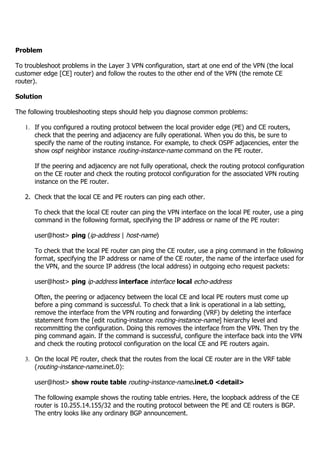Featured
Table of Contents
How To Troubleshoot Common Issues With Avast Secureline ...

The Routing and Remote Gain access to snap-in lives within the Microsoft Management Console, referred to as the MMC. There are multiple methods to access the MMC. You can pick the console from the Start menu's Programs alternatives, within the Administrative Tools folder within Windows server's Control board or by typing mmc at a command prompt.
As Tech, Republic's Brandon Vigliarolo demonstrates within his video at the start of this short article, the Services console shows the status of the Routing and Remote Gain access to entry. From within the Providers console and with the Routing and Remote Gain access to entry highlighted, you can click Start the Service or right-click the entry and select Restart.
In some cases the VPN client and VPN server are set to utilizing different authentication techniques. Verify whether an authentication mistake is the problem by opening the server console. Yet another technique of accessing the MMC is to type Control+R to open a command timely in which you can type mmc and struck Get in or click OK.
If the entry isn't present, click File, select Add/Remove Snap-in, choose the Routing and Remote Access alternative from the choices and click Include, then OK. With the Routing and Remote Access snap-in added, right-click on the VPN server and click Characteristics. Then, review the Security tab to verify the authentication method.
Vpn Not Connecting? How To Fix This & Other Common ...
Ensure the VPN client is set to the authentication approach defined within the Security tab. Typically the products simply examined are accountable for many VPN connection refusal mistakes. But other fundamentals need to be proper, too. If the Windows Server hosting the VPN hasn't signed up with the Windows domain, the server will be not able to authenticate logins.
Each Web-based VPN connection generally utilizes 2 various IP addresses for the VPN client computer system. This is the IP address that's used to develop the initial TCP/IP connection to the VPN server over the Web.

This IP address typically has the very same subnet as the regional network and hence allows the customer to communicate with the regional network. When you set up the VPN server, you should configure a DHCP server to designate addresses to customers, or you can develop a bank of IP addresses to designate to customers straight from the VPN server.


If this option is chosen and the efficient remote gain access to policy is set to permit remote access, the user will be able to connect to the VPN. Although I have actually been not able to re-create the situation personally, I have actually heard rumors that a bug exists in older Windows servers that can cause the connection to be accepted even if the reliable remote access policy is set to reject a user's connection.
Vpn Errors - Common Codes And Messages

Another typical VPN issue is that a connection is successfully established however the remote user is unable to access the network beyond the VPN server. By far, the most common cause of this problem is that permission hasn't been approved for the user to access the entire network. To enable a user to access the entire network, go to the Routing and Remote Gain access to console and right-click on the VPN server that's having the problem.
At the top of the IP tab is an Enable IP Routing check box. If this check box is enabled, VPN users will have the ability to access the rest of the network, assuming network firewalls and security-as-a-service settings allow. If the checkbox is not picked, these users will have the ability to access only the VPN server, but nothing beyond.
If a user is dialing directly into the VPN server, it's typically best to configure a static path in between the customer and the server. You can set up a static path by going to the Dial In tab of the user's residential or commercial properties sheet in Active Directory site Users and Computers and choosing the Apply A Static Path check box.
Click the Include Route button and after that get in the destination IP address and network mask in the area provided. The metric must be left at 1. If you're utilizing a DHCP server to assign IP addresses to customers, there are a couple of other problems that could cause users not to be able to go beyond the VPN server.
Unable To Connect To Client Vpn From Some Devices
If the DHCP server assigns the user an IP address that is currently in usage elsewhere on the network, Windows will spot the conflict and prevent the user from accessing the rest of the network. Another common problem is the user not receiving an address at all. Most of the time, if the DHCP server can't designate the user an IP address, the connection will not make it this far.
If the customer is appointed an address in a range that's not present within the system's routing tables, the user will be not able to navigate the network beyond the VPN server. Make sure the resources the user is trying to access are really on the network to which the user is connecting.
A VPN connection to the other subnet might, in fact, be needed. A firewall software or security as a service option could also be to blame, so do not forget to review those options' settings, if such parts are present between the VPN server and the resources the user seeks to reach.
The first possibility is that one or more of the routers involved is carrying out IP package filtering. I suggest inspecting the client, the server and any devices in between for IP packet filters.
Latest Posts
8 Best Vpns For Small Businesses In Jul 2023
Best Vpns For Small Businesses (2023)
15 Leading Vpn Software For Startups For 2023